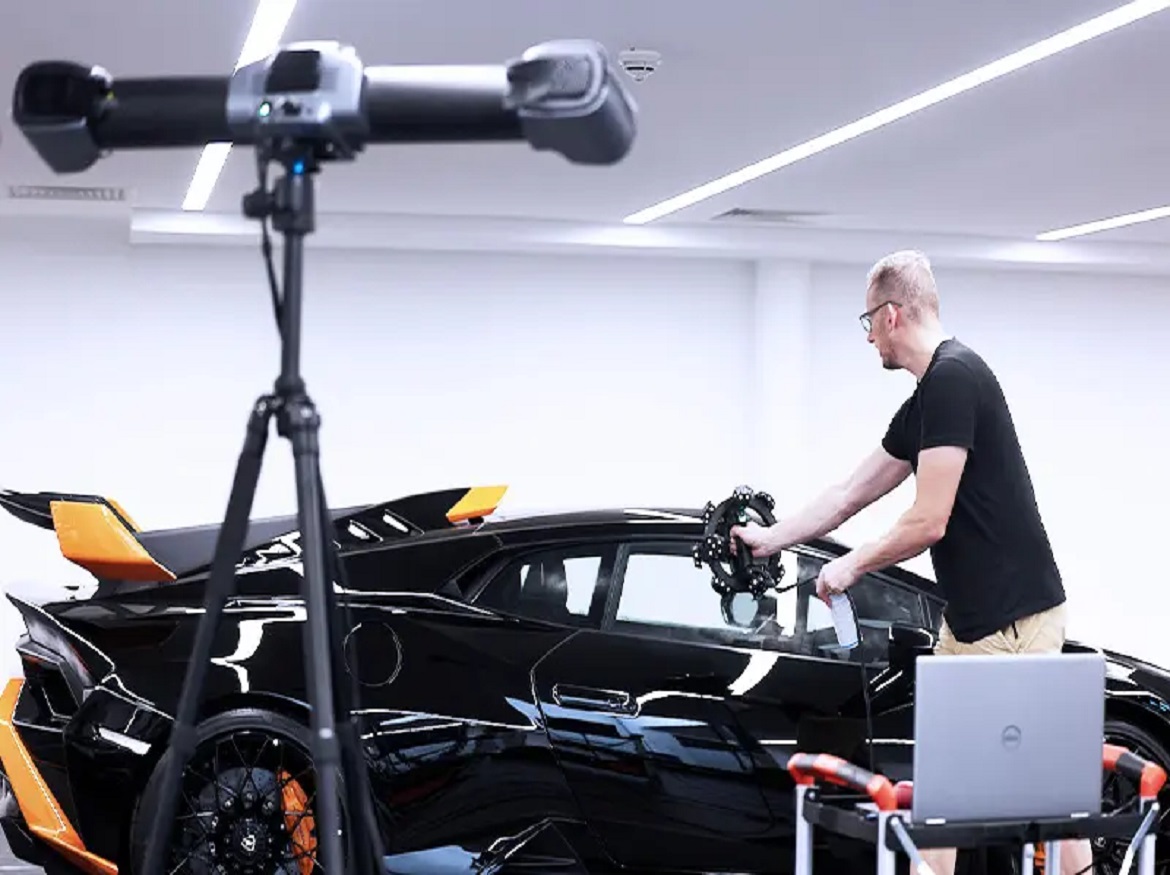In the fast-paced world of the automotive industry, staying ahead of the competition is not just a goal but a necessity for success.
Competitive benchmarking has long been a crucial strategy for automotive companies to gain insights into market trends, identify performance gaps, and drive innovation.
In recent years, the integration of 3D scanning technology has revolutionized the benchmarking process, offering unprecedented accuracy and efficiency.
This blog explores how Scantech’s 3D scanner TrackScan-Sharp system, has streamlined benchmarking in the automotive sector.
The Significance of Competitive Benchmarking in the Automotive Industry
Competitive benchmarking in the automotive industry involves a meticulous comparison of vehicles, considering various aspects such as performance, design, technology, safety features, and fuel efficiency.
This process allows companies to identify strengths and weaknesses in their offerings, stay abreast of market trends, and tailor their strategies accordingly.
The insights gained from benchmarking not only influence product development but also shape compelling narratives for marketing, contributing to a company’s overall success.
The Role of 3D Scanning in Competitive Benchmarking
3D scanning technology has emerged as a game-changer in competitive benchmarking, providing a level of detail and efficiency previously unattainable.
This cutting-edge technology captures precise digital replicas of physical objects, allowing companies to analyze and manipulate virtual models with unparalleled accuracy.
The key advantage lies in the ability to dissect competitor products down to the minutest detail without requiring physical access to them.
With access to digital models, companies can meticulously compare their designs, identifying precise areas of differentiation. Moreover, the integration of 3D scanning expedites the benchmarking process, allowing engineers to collect and analyze data in a fraction of the time required by conventional methods.
The consequences of this advancement are substantial: expedited product development cycles, well-informed design choices, and, ultimately, the creation of superior engineering solutions tailored precisely to meet customer needs.
Application Overview: 3D Scanning of a 2023 Lamborghini Huracan STO
A recent application involved the comprehensive 3D scanning of a high-performance vehicle, the 2023 Lamborghini Huracan STO. The goal was to capture critical data from key components influencing the car’s aerodynamic performance and overall aesthetic, including the side panels and front bumper.
We were tasked with capturing essential 3D data from the high-performance vehicle and transmitting it to our client. This facilitated their analysis of the Lamborghini’s virtual model in comparison to those of their prototype vehicles.

The Solution: TrackScan-Sharp
The solution employed for this task was Scantech’s optical 3D measurement system TrackScan-Sharp.
This exceptional handheld 3D scanning system utilizes cutting-edge optical tracking technology and high-resolution cameras to provide unmatched accuracy and efficiency for large-scale parts and components.

Expansive Measuring Volume
The TrackScan-Sharp boasts a measuring volume of 49 m3, allowing for a tracking distance of up to 8 meters. This capability facilitated the capture of the font and sides of the vehicle in one position, minimizing the need for frequent repositioning and thus saving valuable time.

Target-free Scanning
The system’s ability to perform target-free scanning eliminated the need for reference markers or dots on the object being scanned. This streamlined the scanning process, enhancing efficiency without compromising surface details, as often seen in traditional scanning methods.

High Adaptability to Different Surfaces
The TrackScan-Sharp has proved instrumental in capturing multiple surface finishes in a single scan. This feature was particularly beneficial for the Lamborghini, which had various materials and surface finishes.
The TrackScan-Sharp mode ensured the accurate capture of data from glossy black finishes, carbon fiber, and other surfaces in one scan. This not only made the scanning process more efficient but also enhanced the quality and reliability of the scanned data.

The Future of Benchmarking with 3D Scanning
The case study of 3D scanning the Lamborghini Huracan STO using the TrackScan-Sharp exemplifies the future of benchmarking in the automotive industry.
As technology continues to advance, 3D scanning is setting new standards of precision and efficiency. The TrackScan-Sharp, with its adaptability and unique features, emerges as an invaluable tool not only in automotive benchmarking but across various industries.
In the dynamic landscape of the automotive industry, where innovation and precision are paramount, 3D scanning technology stands as a beacon of progress.
The TrackScan-Sharp system, with its expansive measuring volume, dot-free scanning capability, and high adaptability to different surfaces, exemplifies the transformative power of 3D scanning in competitive benchmarking.
As automotive companies strive for excellence and a competitive edge, embracing cutting-edge technologies like 3D scanning becomes not just a choice but a strategic imperative.









